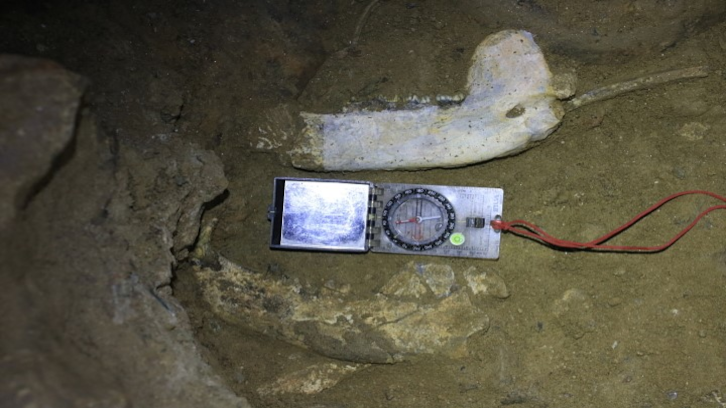A new site in southern France allows learning more about cave bears

The study of the “legendary” cave bear Ursus spelaeus has made it possible to reveal certain aspects of its biology, ecology and evolutionary history. The lives of these bears passed through a hostile environment in which they managed to adapt their body to the harsh conditions of the ice ages in order to survive; however, they also modified their diet. How could this species make all these changes? The discovery in 2011 of fossil remains of its predecessor, Ursus deningeri, at a site in southern France has provided valuable information to help understand these types of issues. The study was led by researchers from the Institut Català de Paleontologia Miquel Crusafont (ICP).
The Pleistocene, a time of appearance and evolution of human genera, has been the subject of interest beyond the scientific community because of the fascination caused by a world dominated by glaciations and ruled by large fauna that dwelled the mammoth steppe just until about 10,000 years ago. How humans interacted with these large mammals is an extended topic in fiction. Precisely, one of the most emblematic mammals of this period is the cave bear, which belongs to a lineage that inhabited Eurasia for more than a million years.
Nowadays, the richness of fossil record allows the scientific community to realize new insights in biological and ecological studies such as the evolutionary history, especially to the most recent forms of the last glacial cycle. Nevertheless, what do we know about cave bear origin? Why does this significant fossil record exist today? How many species had the cave bear lineage? Or how did they manage to adapt to climatic variations until their extinction?
Firstly, the selective pressures related to the intensification of cold conditions forced the dependence of bears to caves as hibernation dens. The paleontological richness obeys to this behavior and the fact that the environmental conditions of caves favors the well-preservation of bones. Secondly, the bear’s solution to the adverse climatic changes was the progressive adaptation to the herbivore diet. The most likely scenario implies the progressive adaptation of the characters required in a vegetable consume, that started one million years ago with the ancestor of lineage, a practically carnivorous bear. Precisely, the progressive adaptation produced the distinction between two classical cave bears: Ursus deningeri, with the first appearance dated to 900.000 years ago and replaced by Ursus spelaeus closer to 200.000-126.000 years.
In the light of this evidence, our research centered in rapport new knowledge about Ursus deningeri that inhabited Europe during the Middle Pleistocene (around 780.000-130.000 years ago), provided by the fossil record recovered from Grotte de la Carrière, a cavity from southern France where have been documented an ancient large mammal assemblage dated to 300.000 years ago. This cave is found inside the Réseau Lachambre, one of the three large karstic systems from Les Gorges de Villefranche. Since 2011 the paleontological richness from these networks was cataloged by Federació Catalana d’ Espeologia (FCE) and Institut Català de Paleontologia Miquel Crusafont (ICP) with the collaboration of the Conflent Spéléo Club. The recently published paper is the first work derived from the paleontological surveys done until the present day. The aim of this study is to determine the phylogenetical position of bear remains using the characters observed related to the herbivorous diet.
The results led us to verify the acquisition of characters required in the herbivore diet and related to the mandibular re-adjustment and the masticatory apparatus. Despite displaying the adaptations to vegetable consume, the degree of derived characters not reach to the exclusive herbivore diet restricted to the last forms. As the chronology is on the limit of Ursus spelaeus replacement, the scenario we found here is the expectable. Unfortunately, the fossil record of this period is scarcely, for that reason future studies on the Grotte de la Carrière material may provide new important data and will help to know how the adaptation of this specie to climate change was or why the herbivore diet was the best option.
Federació Catalana d’Espeleologia (FCE).
Universitat Autònoma de Barcelona.
Institut Català de Paleontologia Miquel Crusafont (ICP).
Conflent Spéléo Club
References
Prat-Vericat, M., Rufí, I., Llenas, M. et al. Middle Pleistocene Ursus deningeri from Grotte de la Carrière (Réseau Lachambre, Têt Valley, Eastern Pyrenees). J Iber Geol 46, 163–175 (2020). https://doi.org/10.1007/s41513-020-00124-1


